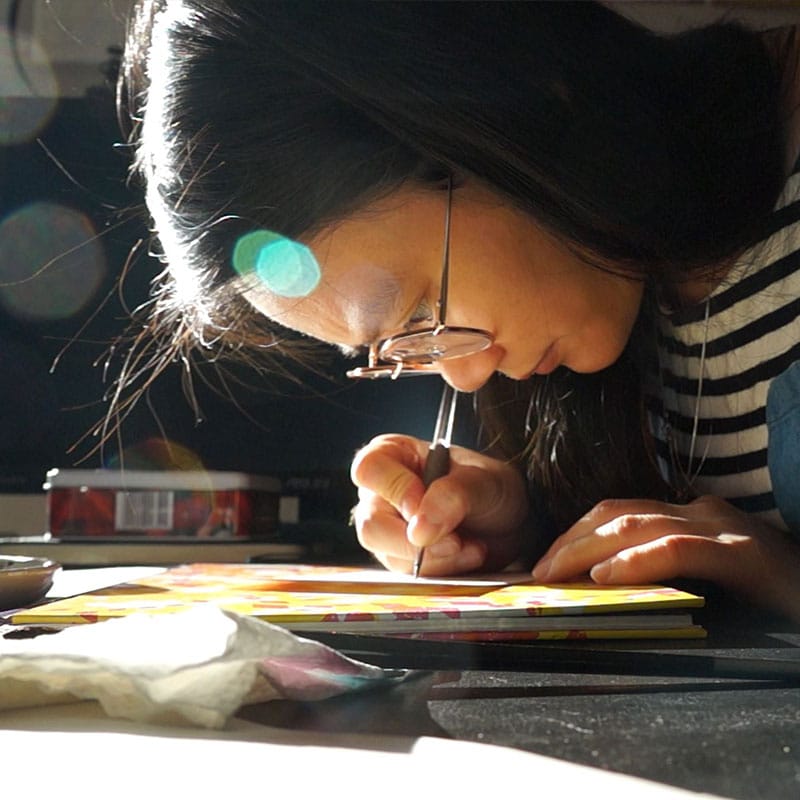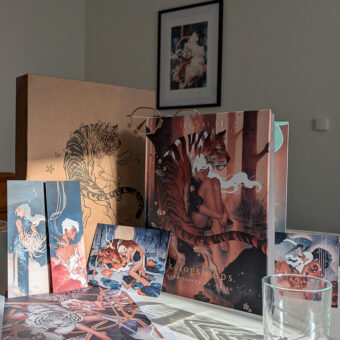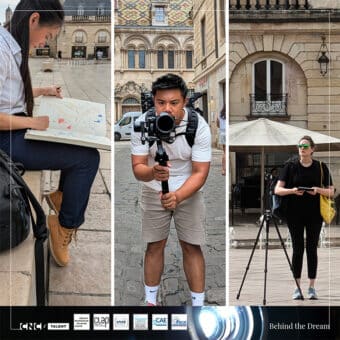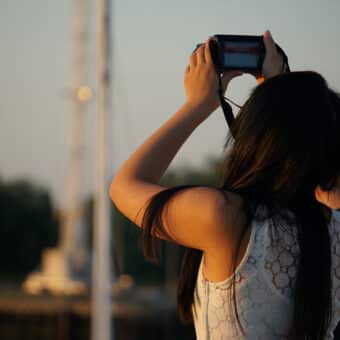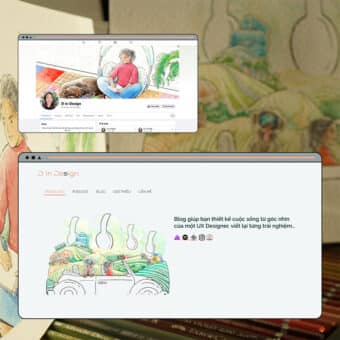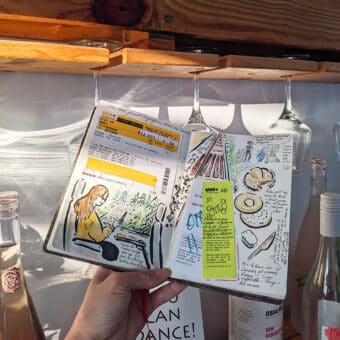Edited by my beloved friend K.L
Creating an illustration is fundamentally to transform a blank page into a drawing. It seems like magic, doesn’t it? As strange as it may sound, the reality is less gratifying than how magic would work.
This appealing magical side of drawing is often perceived as if drawing is supposed to be as easy as snapping fingers. Moreover, the mass arrival of TikTok videos and Instagram reels of speed drawing (which I myself consume without moderation) sometimes gives the impression that drawing works miraculously without effort. This can sow a false belief in laypeople while discouraging amateurs who are just starting out, that everything depends on talent and inspiration flowing through the artist’s veins.
In reality, creating an illustration is a methodical process based on the balance between the unlimited imagination and the limitation of skills. For those who work in the applied arts, there are also guidelines to follow and constraints to consider in each project.
That’s why I have been working on this blog post for several months, which is accompanied by a video, in order to show you my real process of creating an illustration, from a blank sheet of paper to the final work, without shortcuts. We will follow the evolution of a client project, with the reflections, the reason of the choices, the number of hours spent to complete each step of work. This post does not aim to be a tutorial, all technical details will not be included.
Video version of this article (in French with English subtitles):
Part one:
It does NOT start with a line on a paper…
Let’s dive into the reality of the birth of a commercial illustration!
Even if I want to give you the most realistic description without filter, for confidentiality reasons, I will not be able to reveal the backstage of my client’s real projects. Therefore, let’s go for a simulation that replicates just the same conditions as a client project.
Since I intend to present all of my drawing process in a video, why shouldn’t we start with a project that had a nice mix between music and illustration? For example, a commission that I receive to create a music CD cover.
I will take this opportunity to share with you my favourite song as well, the one I have been singing since I was 10 years old. This song comes from a cassette tape of my language classes back in elementary school that I used to listen to over and over again while drawing in secret.
For copyright reasons, I will not be able to use the original version of this song. But for this special project, my musician friend Ju_Lien kindly offered us a wonderful cover. Let’s discover this piece of music together with the project instructions.
The brief
Every project for client starts with a brief, the equivalent to a detailed description of the expected result.
Project description
Production of 7 color illustrations of 7 characters for the cover of the CD “The week of the music”, educational CD for the learning of the French language for the children.
Global creative brief
- The illustration should be based on the lyrics of the song “The week of the music”.
Music on the move, days of the week
Music on the move, days of the week
Monday walks ahead, rantanplan
Tuesday plays the trumpet, the trumpet
Wednesday, the violin, the violin
Thursday, the accordion, the accordion
Friday and Saturday sing the Sunday’s song,
Friday and Saturday sing the Sunday’s song.”
- Outline one character per day of the week, with no specific requirements nor obligations about the characters
- Lay out all 7 characters for the visual of the CD cover
- Include Only 1 character per surprise postcard included in each CD
- Traditional technique
- Special mention: The client contacted me for my expertise in multicultural illustration. Since the CD will be published on global scale, they wanted to show inclusiveness in the illustration.
- Deadline: 3 weeks
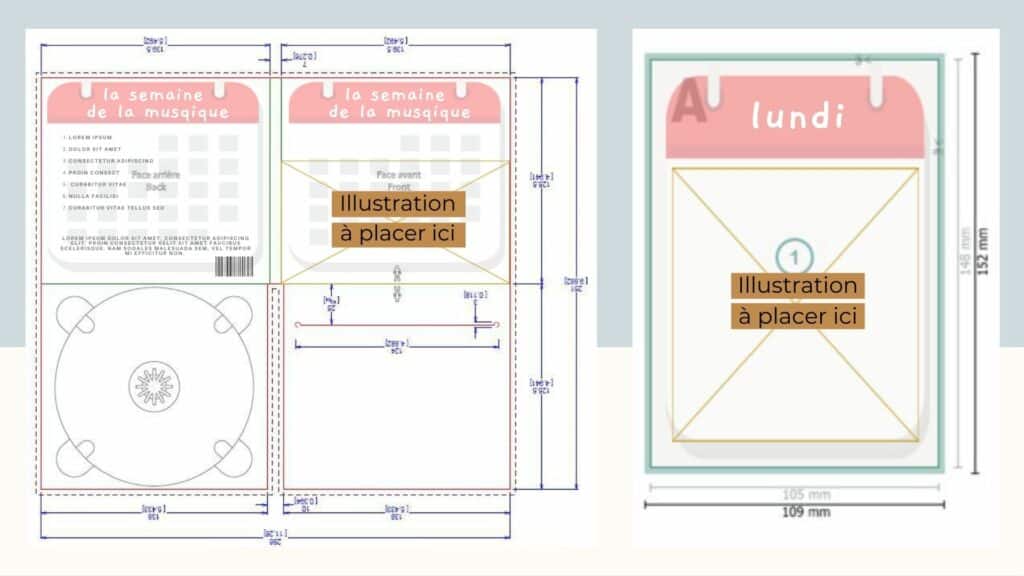
CD and postcard layout
All the instructions are set, we can move on to the most important step of the creation, which has an impact on everything I will do afterwards:
Monday walks ahead… The research
The presence of 7 different characters helps expressing the multicultural aspect with more ease. However, the biggest trap when you work with the theme of culture diversity is to fall into the routine of filling the quotas, which often ends up pressing even more on the difference.
Hence, to avoid this mistake, I chose to be inspired by a work that in my opinion, addressed the subject of inclusivity and prejudice related to racial differences with welcoming accuracy and discretion: the cartoon Zootopia. In this movie, using the world of animals, a parallel perception was drawn with the human world is created, without directly targeting an ethnicity by the means of different animal races.
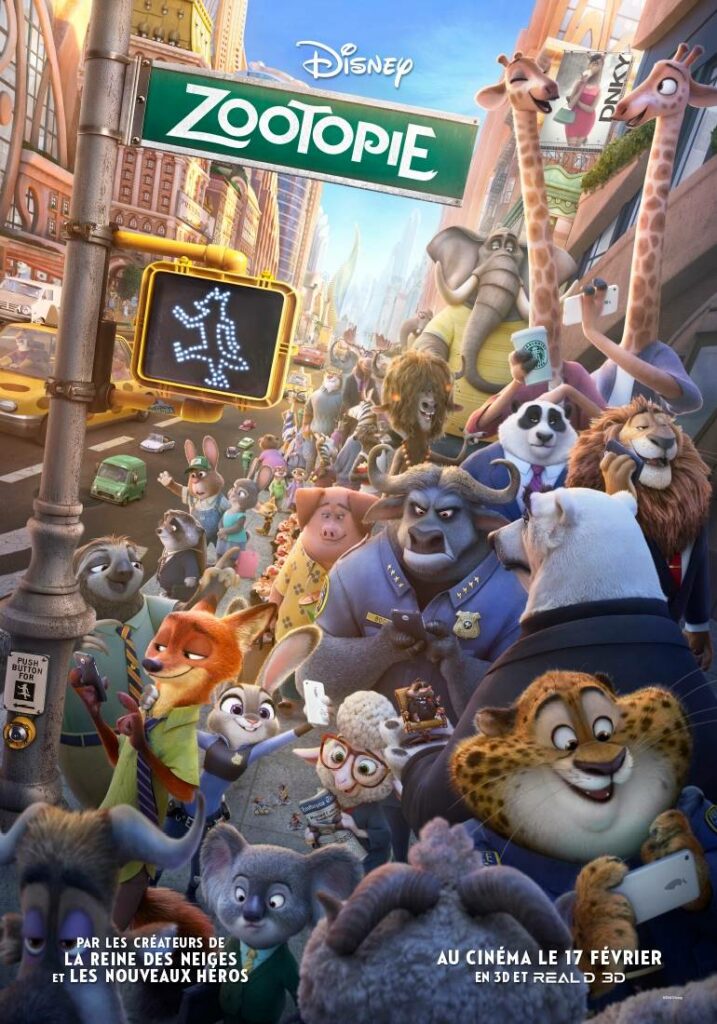
In addition, having animals from different environments playing music together sends out an excellent representation of cultural exchange.
From this, a primary question arises:
Which animal should I choose?
Since the client gives me the freedom and a sufficient allotted time to pursue my ideas, I do not want to choose the animals randomly or solely for ease of execution. It would be most satisfying that the music theme is well depicted in the illustrations by one way or another.
However, one problem arises: music is far from my specialty, so the ideas do not just flow naturally!
That’s the reason why I started exploring the song based on the most obvious component: the lyrics. Since the song mentions several musical instruments, why don’t we draw animals related to the country of the creator(s) of these instruments, wearing the traditional clothes of the country?
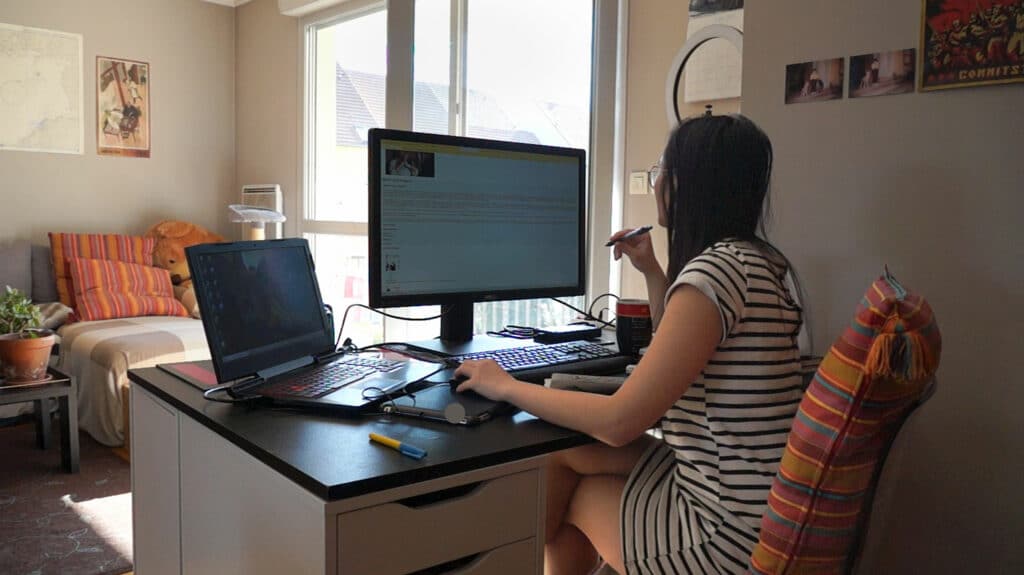
I started diving into articles about the origins of musical instruments, scribbling down the items in a notebook. These doodles were definitely not “Instagrammable”, but their role is just like taking handwritten notes during school: assimilating information.
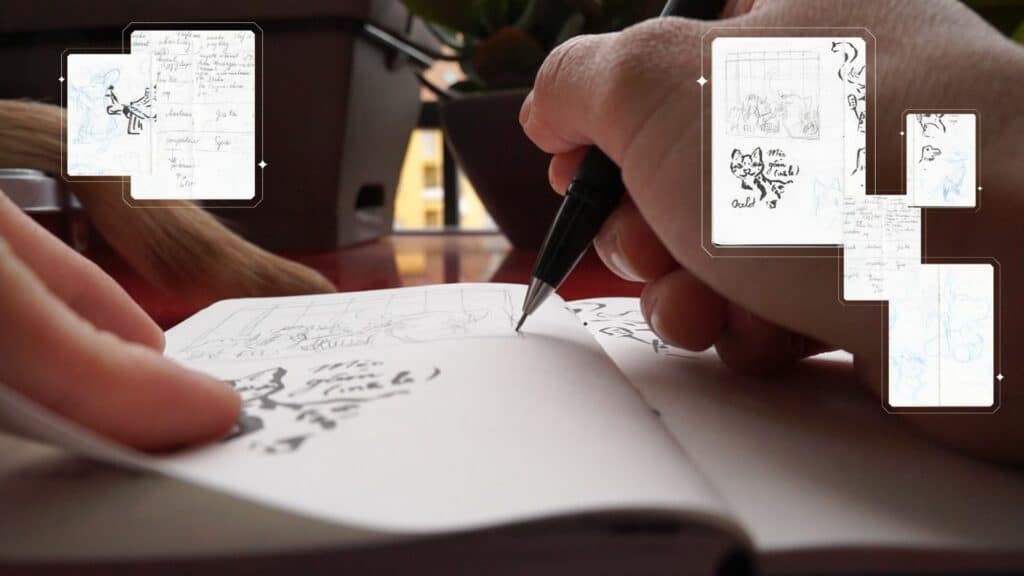
Although this idea seems to be interesting at first sight, another problem quickly came: the trumpet, the violin and the accordion all come from European countries. In these countries, traditional clothes are no longer worn by most people. They are present only on special occasions, often by performers. Using these outfits for this project will result in an overly “historical” look to the final illustration, which is not the desired outcome.
When inspiration does not happen by chance
I was not blocked by the previous issue though, because a new lead came to me while doing this research, or more precisely, while doodling during the research. As I hum along, my mind wanders and suddenly an artist’s image pops into my imagination every time I pronounce the name of an instrument.
This may sound random and absurd, but in reality, inspiration comes with the work. By maintaining a disciplined pace of work on a daily basis, which is everything but glamour, we clear the way for our mind to search in the right direction and set the stage for the arrival of creative ideas. Elizabeth Gilbert calls this reality “hard work against fairy dust” in her book Big Magic.
About my idea, as confessed before, I do not have a very deep musical culture, my mind does not help me to create a connection to music sounds, but rather to the performances that left some sorts of impression on me, mostly by the aura and charisma of the artist.
For example, when thinking about the “trumpet” instrument, my mind flew over my meagre memories of music videos. Among them, there was one particular clip where I saw a trumpet solo scene, only for my mind to stop dead in front of “the twisted trumpet” and the puffing cheeks of a musician.
These two clues were enough for Google to send me the iconic portrait of Dizzy Gillespie, an American trumpeter. And among the first results, the photo of Dizzy Gillespie on stage in Agbada immediately gave me the direction of the illustrations to make.
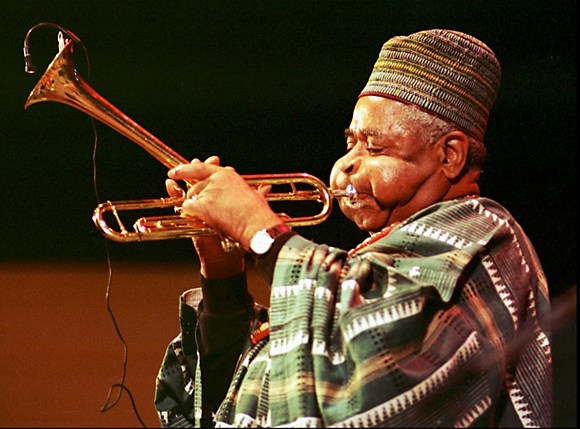
The formula for choice
The method of defining what to draw is a mixture of research results and instinct:
For the animals, each animal will be the emblem animal from the country of the creator(s) of each musical instrument. As for the outfit, it will be the traditional outfit that reminds the musician playing the same instrument that inspired me.
The time spent on this research step is: 1 hour 30 minutes.
Once I’ve come up with a concept, I … pack up and go do other things. Or more precisely, I enter the “incubation” phase, a fundamental phase among the four phases of the creative process defined by psychologist Graham Wallas in the book The Art of Thought.
This phase consists of decanting after the research, without letting the consciousness interfere, to allow the idea to mature. Ideally, I would stop working on the project for a whole day to form a necessary detachment. The entrepreneurial life allows me to schedule my day in a way that could favor this primordial phase by letting me work on completely different tasks (such as doing my due paperworks or carrying out the maintenance of my website) before attacking the next step:
The moodboard, or the setting of ideas
No, I still do not start drawing at this step. Not just yet.
I need to collect references first.
Even though my mission as an illustrator is to make my clients and their audience dream, my drawings are not just the fruit of my imagination. In this specific commission, it is important to understand that by choosing to create multicultural illustration, I choose to respect different cultures, and to stay faithful to them as much as possible, hence the necessity of looking for references.
My moodboard does not look like the ones you usually see on Pinterest. It is simply the images uploaded and then sorted by folder.
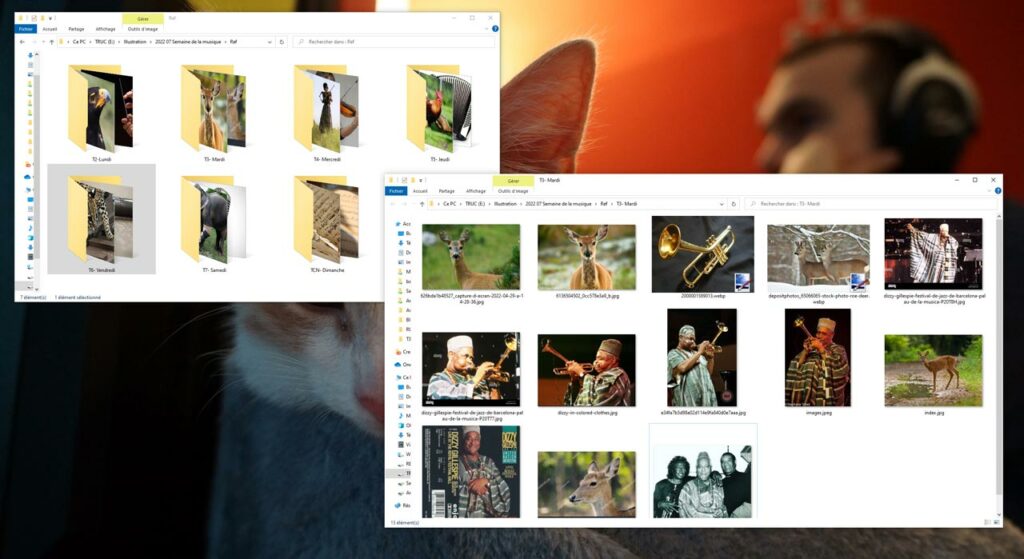
Monday
“Monday walks ahead, rantanplan” There is no instrument for Monday. But who better than a conductor to “walk ahead” and start the music week?
- Among the very first conductors in history, we have Louis Spohr, Carl Maria Von Weber, Felix Mendelssohn, who are all Germans. The chosen animal is therefore the emblematic animal of Germany: the black eagle
- My muse: Jeri Lynne Johnson, an American conductor. I did not choose to draw the eagle in a traditional American outfit for the same reason mentioned above for the traditional outfits of European countries. Instead, to make it obvious at first glance that she is a conductor, I chose a suit, in a style already worn by Jeri Lynne Johnson.
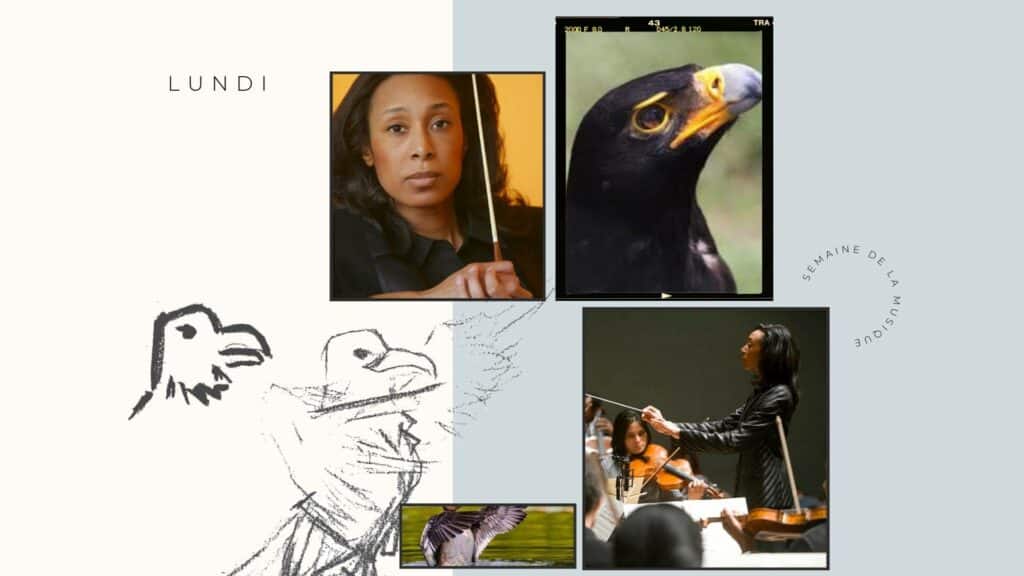
Tuesday
“Tuesday plays the trumpet, the trumpet”
- In the 18th century, Anton Weidinger, a trumpeter at the Vienna Court Opera, created an E-flat keyed trumpet that let to what would become the modern trumpet. Logically, the animal chosen should have been the Austrian emblematic animal: the rustic swallow. However, on the album cover, the eagle will be seen as such right next to the swallow, and since I want to respect the proportion between the animals, the swallow will be too small and the trumpet will not be seen. Because legibility is of utmost importance for me, I went for another animal from the Austrian fauna: the deer
- My muse: As mentioned above, my inspiration is Dizzy Gillespie, an American trumpet player. The outfit will be the Agbada, the traditional Nigerian garment with the Fila headpiece, worn by Dizzy Gillespie at the Vienna Jazz Fest in 1991.
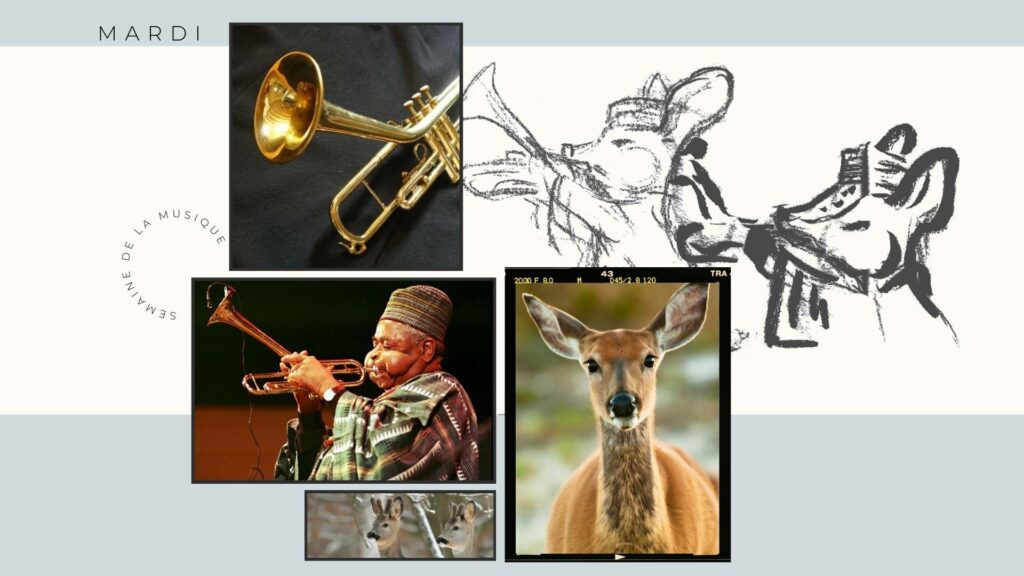
Wednesday
“Wednesday, the violin, the violin”
- In the 1520s, a luthier named Giovan Giacomo Dalla Corna created the very first violin in Italy. As for the chosen animal, the emblematic animal of Italy: the wolf
- My muse: Manami Ito Japanese violinist. The outfit will be the kimono, recalling the origins of the violinist.
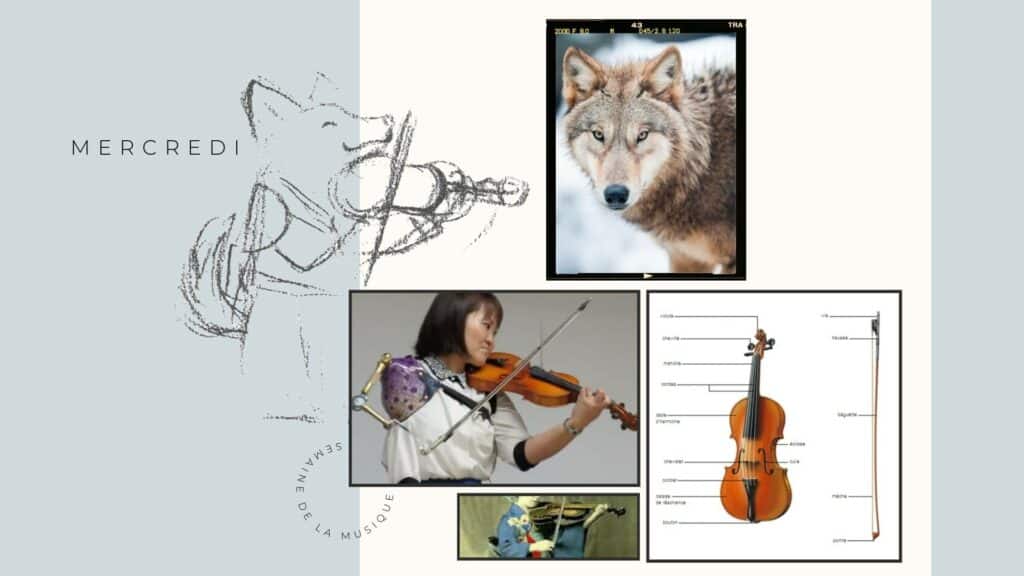
Thursday
“Thursday, the accordion, the accordion”.
- The first accordion with piano keyboard appeared in 1852, designed by Philippe-Joseph Bouton, a Frenchman. The chosen animal eventually would be the emblematic animal of France: the rooster
- My inspiration this time does not send me a particular artist. It leads me to the scenes of the Interceltic festival in Lorient. So I chose the typical Brittany jacket and sailor suit.
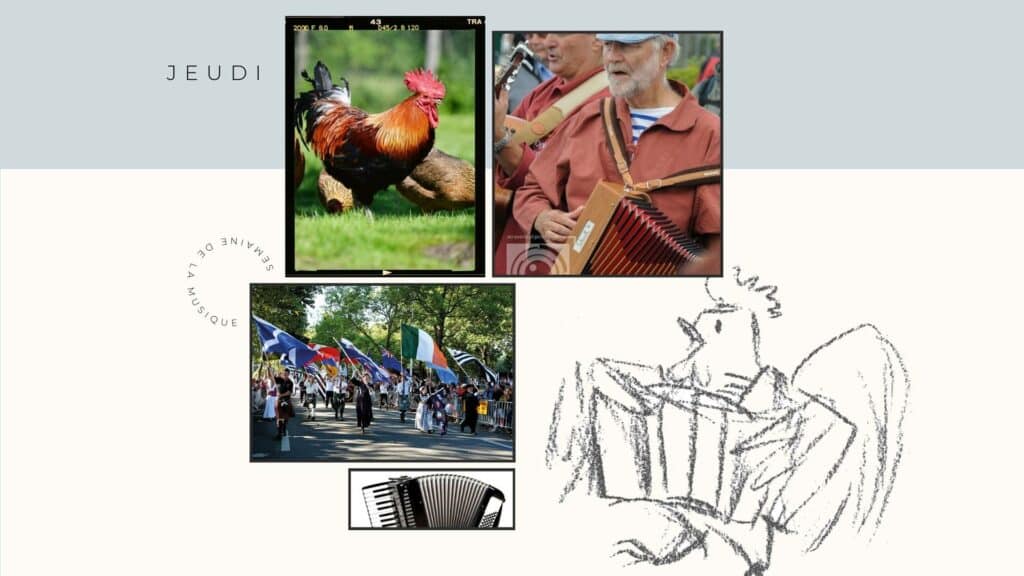
Friday and Saturday
“Friday and Saturday sing the Sunday’s song”: it’s pretty obvious that the characters on Friday and Saturday are singers.
- Singing is a natural part of every ethnicity, so there is no “creator”. For that reason, I choose the animal and its outfit according to my inspiration
- Looking for inspiration leads me to a memory of a singing performance, 20 years ago, given by two young Gia Rai (the minority ethnic group of the Central Highlands, or Tây Nguyên, of Vietnam) invited to our elementary school. I hence chose two typical Tây Nguyên animals: the elephant and the marbled cat, wearing the traditional Gia Rai outfit.
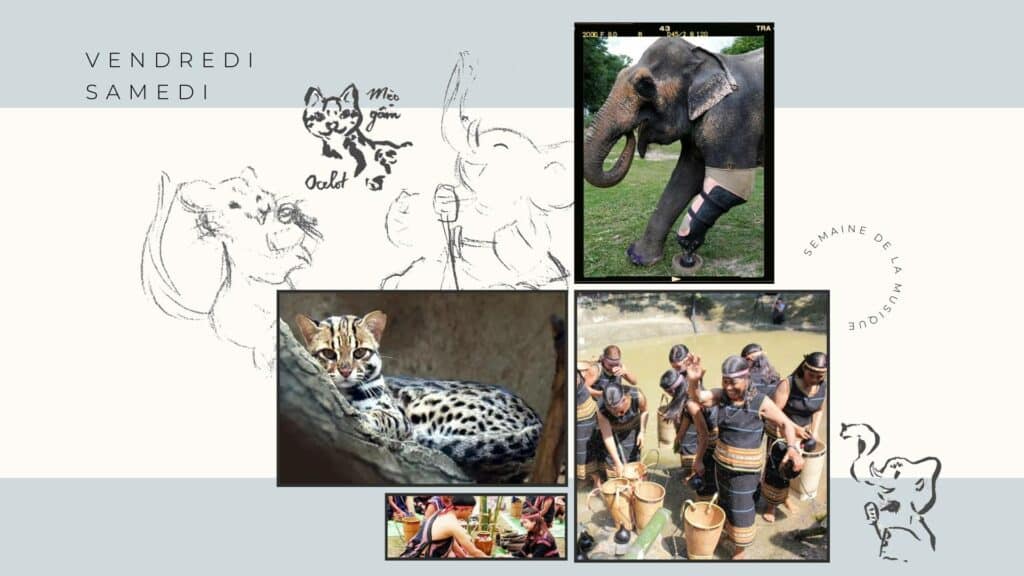
Sunday
Since “Friday and Saturday sing the Sunday’s song”, Sunday must surely be a composer!
- The oldest piece of annotated music known in history is the Hourite Hymn No. 6 to Nikkal (the Canaanite goddess of orchards, wife of the moon god). This piece is dated over 3400 years old and was discovered in Syria. The animal emblem of Syria is the falcon, but it is often confused with the eagle (the animal of Monday) and since there was no animal that lives in water among our six other animals, I decided to choose a fish: the conger printed on a Syrian stamp.
- Since the conger is not an emblem animal, and since I have no particular inspiration for the Sunday character, I will let the conger simply wear the traditional Syrian outfit.
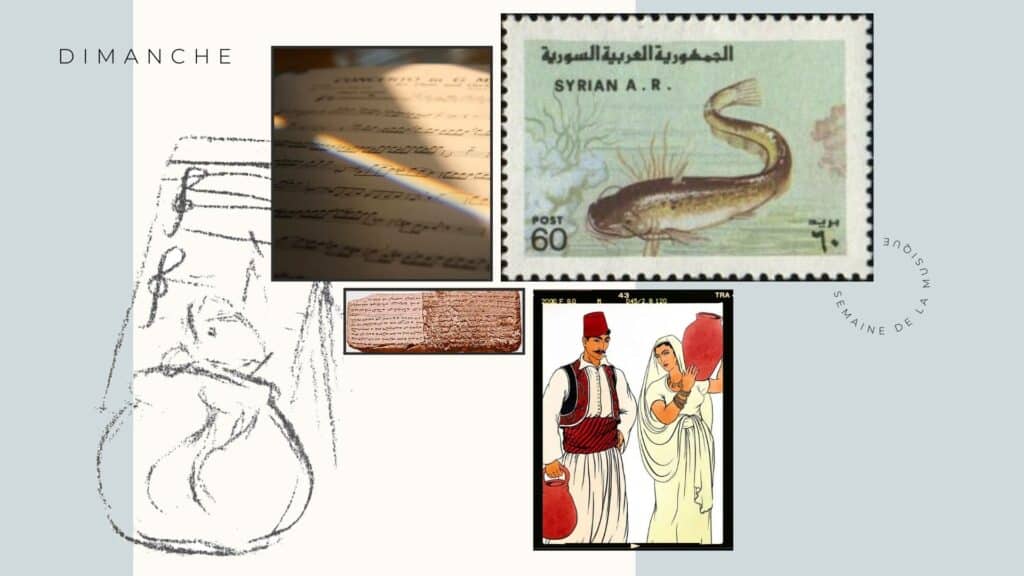
I continue to doodle throughout the collection of references. The artistic direction is built in parallel in my head. It is only at this stage that I see the final rendering of the illustrations in my imagination. On the other hand, keeping a list of details as I go along helps me remember all the ideas.
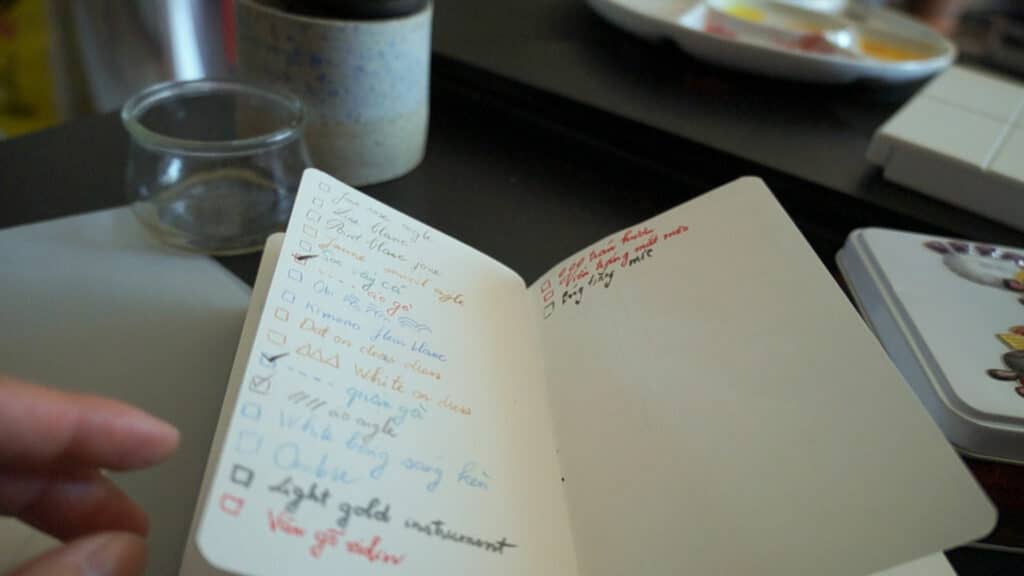
The time spent on the moodboard stage is: 2 hours.
But… it has been two days and I still have not started drawing…
Here are the reasons why at this point in the process I have not yet started drawing:
First, I never take the research stage lightly. Through previous working experiences in security field, I learned one principle: always work on prevention before thinking about protection. For the illustration, I take good care of the conception step to avoid any correction due to lack of research behind.
Secondly, I have to discuss with the client about the direction that we would like to pursue. My illustrations are created to highlight the project of my clients so it is important that they follow the vision of my clients.
It’s only after their validation that I would proceed with the very first line of the drawing.
(to be continued)
The second part of the article, published on August 15th, 2022: Creating with the heart of an artist and the mind of an engineer
*Please consult the information on Copyright & Intellectual Property before copying or mentioning the content and images of tuhaan.com



